Simple Air Quality Monitoring With TFT LCD Display-- Ameba Arduino
by xidameng in Circuits > Arduino
862 Views, 2 Favorites, 0 Comments
Simple Air Quality Monitoring With TFT LCD Display-- Ameba Arduino
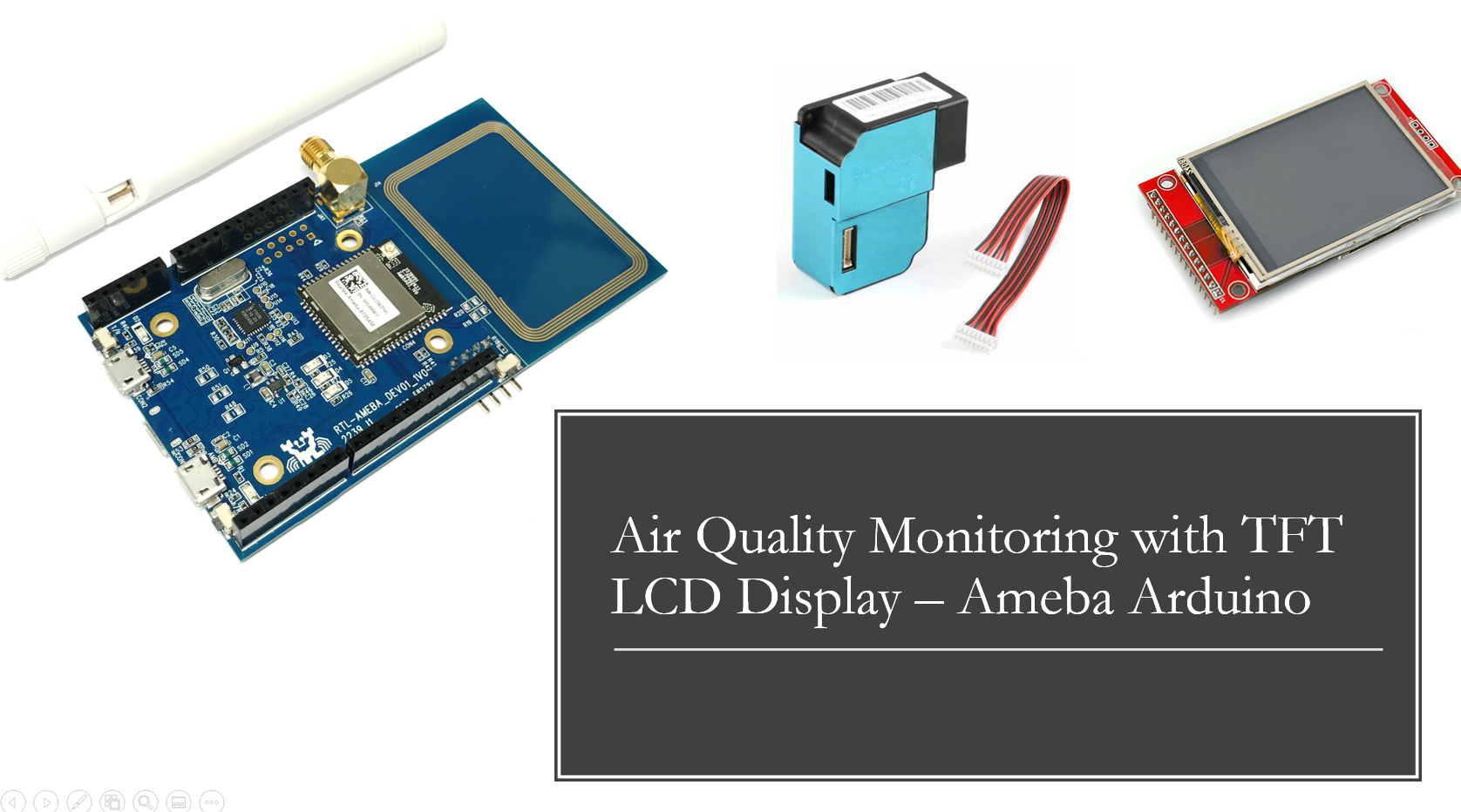
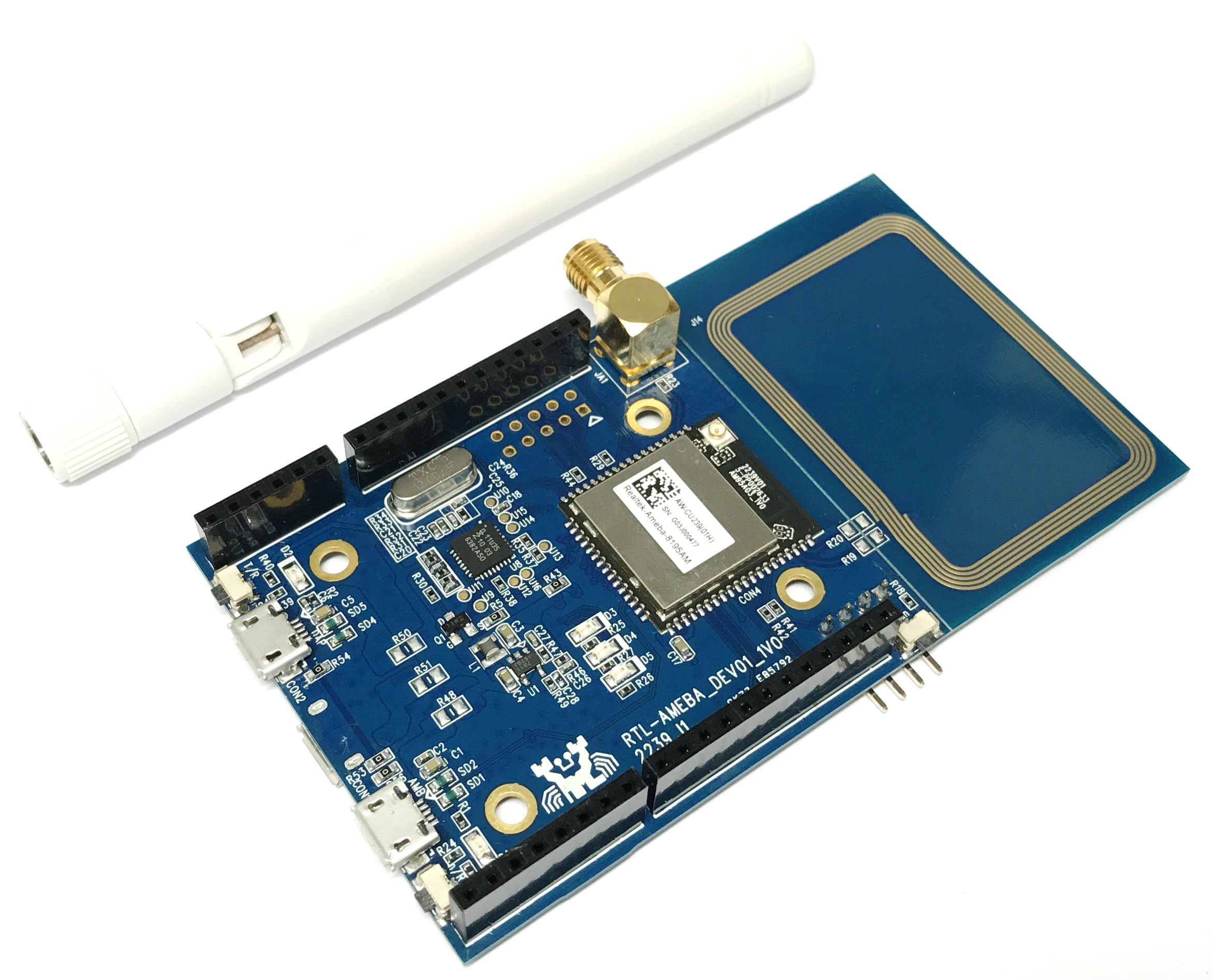
Introduction
Now that most people stay at home to avoid close contact with potential COVID-19 virus carrier, air quality becomes an important factor to people’s well-being, especially in tropical countries where using air-con is a must during the day, as prolonged use of air-con may do more bad than good to people’s respiration system thus weakening our immunity and make people more susceptible to virus infection.
Here I am going to show you how to make a simple yet powerful air quality monitoring system using Realtek Ameba RTL8195AM development board and PM2.5 module, together with a TFT LCD display to create a colourful interface.
Supplies
§ Ameba x 1
§ ILI9341 TFT LCD with SPI interface x 1
§ Plantower PMS3003 or PMS5003 x 1
Hardware Setup
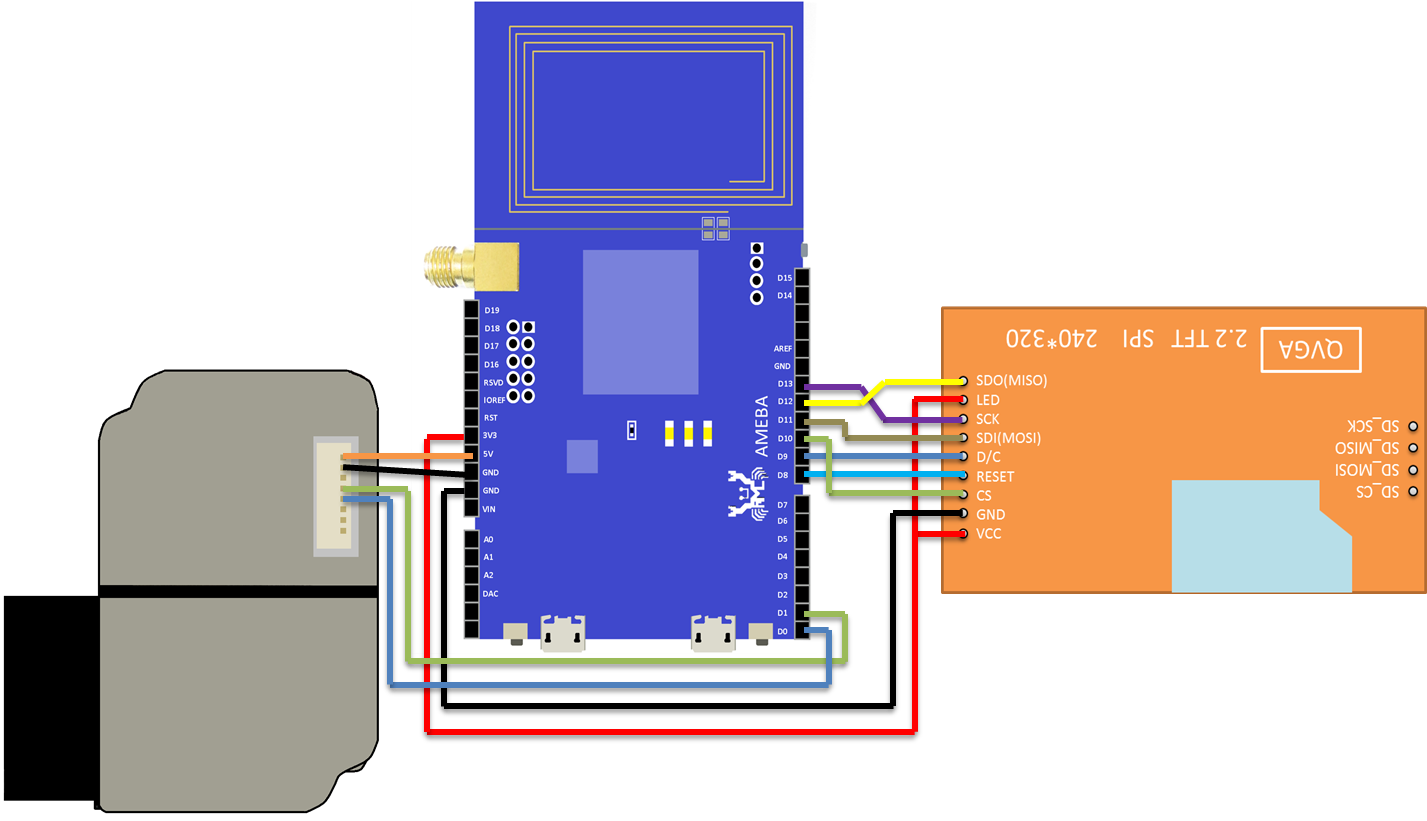

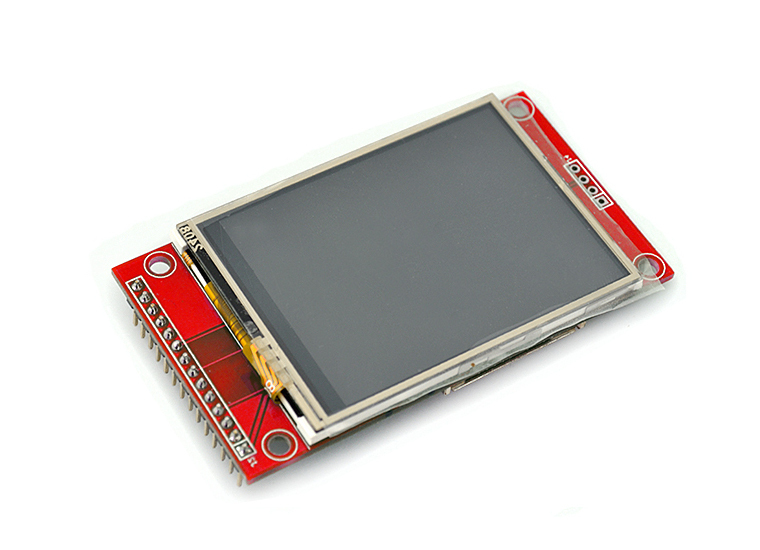
Connect TFT LCD display and PMS3003 to ameba, ther wiring is the first picture above.
(Note: PMS3003/PMS5003 sensor requires 5V voltage)
Software Setup

Make sure you have already install ameba through arduino IDE additional board manager, if not check the link below to get started,
https://www.amebaiot.com/en/ameba-arduino-getting-...
All done? Now open the example,
"Files" -> "Examples" -> "AmebaSPI" -> "PM25_on_ILI9341_TFT_LCD"
Compile and upload to Ameba, then press the reset button on ameba.
Demonstration
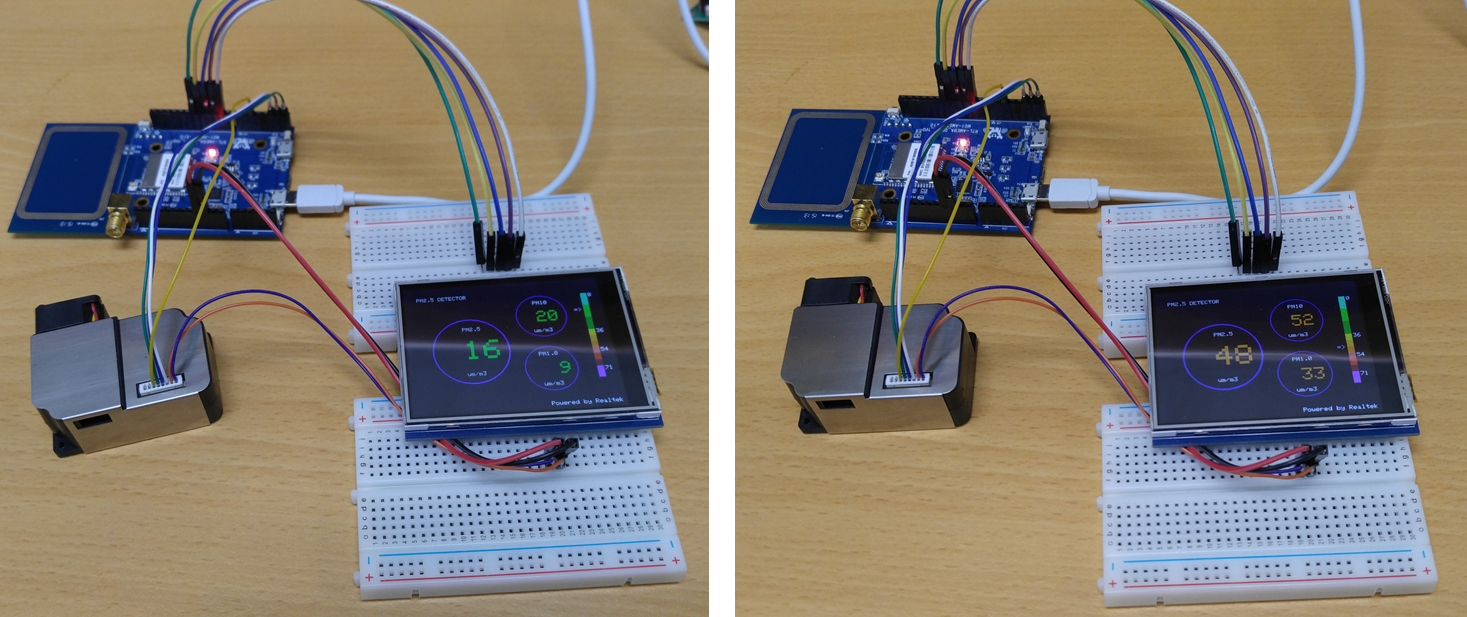
If all connection is correct, then you can see the concentration value of PM1.0, PM2.5 and PM10 on the LCD shown alove.
You may want to rub your cloth or blow air into the sensor and watch how PM readings increase/decrease on the LCD display.
Simply tidy up the wire clutter and slot everything in a box, boom! You have a dedicated home air quality monitor!